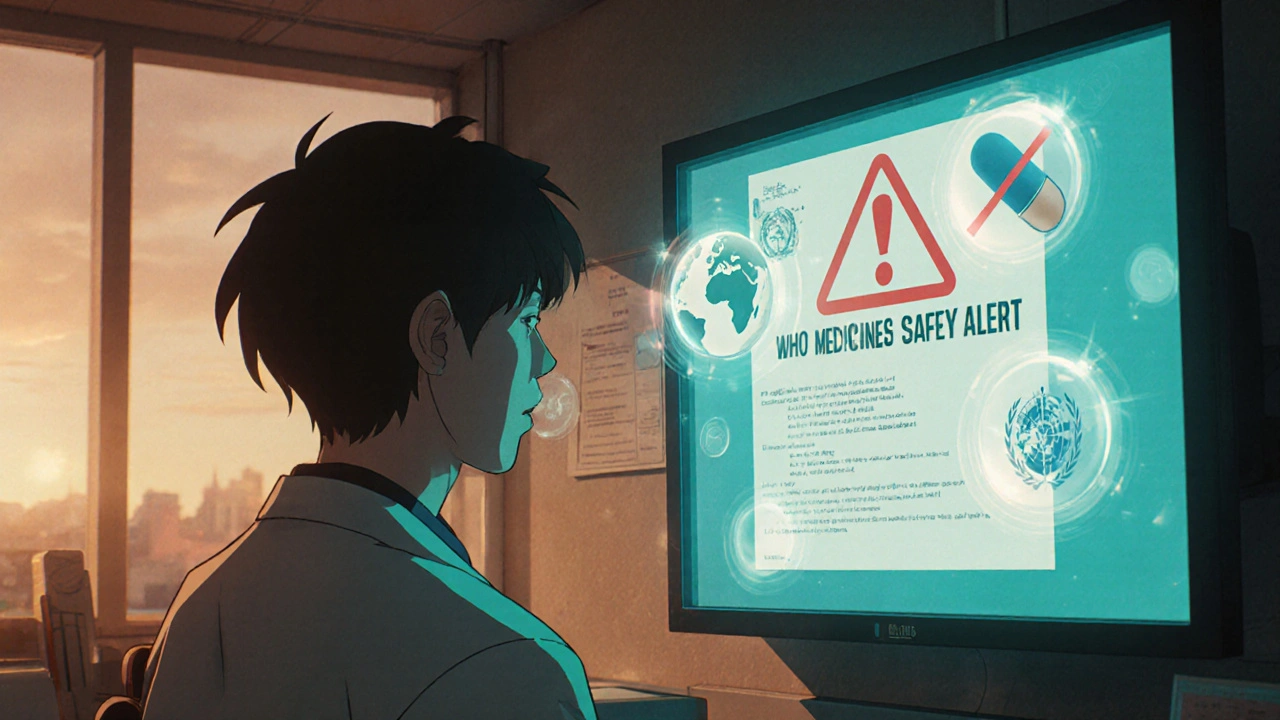When it comes to WHO drug safety, the global system run by the World Health Organization to track and prevent harm from medicines. Also known as global pharmacovigilance, it’s the invisible backbone keeping millions of people safe from dangerous side effects, counterfeit drugs, and manufacturing flaws. This isn’t just paperwork—it’s real-time monitoring that stops a faulty batch of antibiotics from reaching a hospital in Nigeria, or catches a mislabeled insulin vial in India before it’s used.
Pharmacovigilance, the science of detecting, assessing, and preventing adverse drug effects, is how the WHO connects dots between isolated patient reports and global patterns. If ten people in three countries report the same rare reaction to a generic blood pressure pill, the system flags it. That’s how recalls happen. That’s how warnings get updated. It’s not perfect—some countries lack reporting tools—but the network is expanding fast. And it’s why you can trust that a pill made in China or India meets the same basic safety rules as one made in the U.S. or Germany.
Medication errors, mistakes in prescribing, dispensing, or taking drugs are one of the biggest threats WHO drug safety fights daily. A wrong dose, a mix-up between similar-looking labels, or a patient taking two drugs that clash—these aren’t rare. The WHO estimates that unsafe medication practices cause at least one death every minute worldwide. That’s why they push for clear labeling, digital prescribing systems, and pharmacist training in low-resource areas. You don’t need to be a doctor to help: always check your pills against the prescription, ask about interactions, and report anything unusual to your provider.
Behind every WHO drug safety alert is a story. Maybe it’s a batch of fake malaria pills in Southeast Asia. Or a generic thyroid med that doesn’t dissolve properly because of poor stability testing. Or a new diabetes drug linked to kidney issues after being used by 500,000 people. The WHO doesn’t just react—they set standards for drug monitoring, ongoing evaluation of medicines after they’re on the market. That includes checking if generics really work like brand names, if foreign factories follow cleanroom rules, and if aging patients are getting the right doses. Their guidelines are why your pharmacist asks if you’re taking anything else, and why your doctor orders blood tests after starting a new med.
You’ll find posts here that dig into exactly how this works in practice: how the FDA inspects overseas drug factories, why bioequivalence matters for generics, how compounding errors can be avoided with dual checks, and what seniors should watch for when managing multiple pills. These aren’t abstract policies—they’re daily realities for patients, caregivers, and pharmacists. Whether you’re managing diabetes with metformin, taking levothyroxine for your thyroid, or helping an elderly parent avoid dangerous interactions, WHO drug safety standards are the reason those pills are even safe to take. The system isn’t flawless, but it’s the best we’ve got—and knowing how it works helps you protect yourself.

Learn how to track global medication safety alerts, report side effects effectively, and use trusted resources like WHO, UMC, and the Yellow Card system to protect patients and stay ahead of emerging drug risks.
